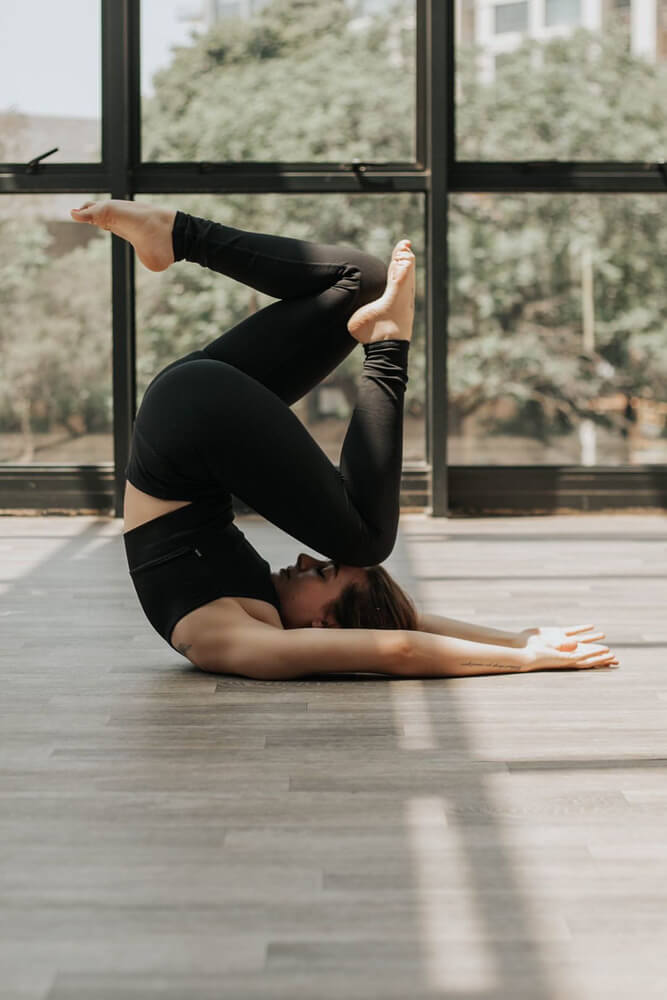hatha and vinyasa yoga
Hatha and Vinyasa Yoga allow us to move in the way our body was intended. Our ground flows are the perfect way to connect the mind, body and soul.
Vinyasa Yoga
The core idea of Vinyasa Yoga is to shift emphasis from posture to breath, thereby realizing that postures, like all forms, are impermanent.
Instead of keeping postures for a longer time, poses are kept for a couple of breaths only so that no identification with the posture or body is stimulated.




What is Vinyasa Flow Yoga?
In a way you could say that Vinyasa Flow Yoga is a meditation on impermanence. The only thing that is permanent throughout the practice is the focus on the breath, the Ujjayi breath.
A Vinyasa Flow practice produces heat, which is needed to burn toxins (physical as well as the ‘poison’ of ignorance and delusion). The full-Vinyasa Flow practice, which entails coming back to standing between postures, has a flushing effect through the constant forward bending. It is considered a too-demanding practice and we usually apply the half-Vinyasa practice nowadays.
However, the full version can be recommended in cases of strong, persistent toxicity and for recuperation after disease. The half-Vinyasa practice, in which one jumps back between performing the right and left side of a sitting posture is designed to create a balance between strength and flexibility and to increase heat.
The Vinyasa method balances the flexibility that is being created through asana. If no strength building is there injuries may occur.
The typical Vinyasa Flow Yoga combines the Ujjayi breath with movement from one asana into the other, This style of yoga is derived from Ashtanga Vinyasa Yoga and thus classes might be very similar. However there are no general rules and therefore classes might be very different from one teacher to another.
At Asana Tribe, we offer both Vinyasa Flow classes and Aerial Vinyasa, where we extend this practice further with the help of an aerial silk.
Breathing is very important. Without breathing, the spiritual mind and body are not coming. There is a method to breathing. That is Vinyasa.




Hatha Yoga
This school of yoga is considered the most traditional form of yoga. All the other forms are derived from Hatha Yoga.
‘Ha’ means sun, ‘tha’ means moon. Also ‘ha’ represents heat, pingala and the masculine aspect and ‘tha’ represents coolness, ida nadi and the feminine aspect.
What is Traditional Hatha Yoga?
In Hatha Yoga, the soul is considered to be like the sun, never changing in brightness. Our mind is considered to be more like the moon. It has fluctuations and phases.
In traditional Hatha yoga classes (as actually in all other forms of Hatha yoga like Ashtanga, Vinyasa, lyengar, Sivananda, etc) we aim to balance ‘ha’ and ‘tha’, or soul and mind. Our soul’s brightness can pervade the whole body. We seek to unite/balance the body with the soul and the soul with the universe.
Our total personality is guided by the way we breathe. Breathing has a direct connection with and effect on the functioning of the mind. The Hatha Pradipika declares it very clearly (cale vate cala cittam…). Mental conditions and situations are immediately reflected in our breathing pattern and vice versa.
Hatha yoga, concentrates on awareness, stability and balance with deep focus on breath and alignment.
Hatha yoga teaches us to use the body as a bow, asana as the arrow and the soul the target.
